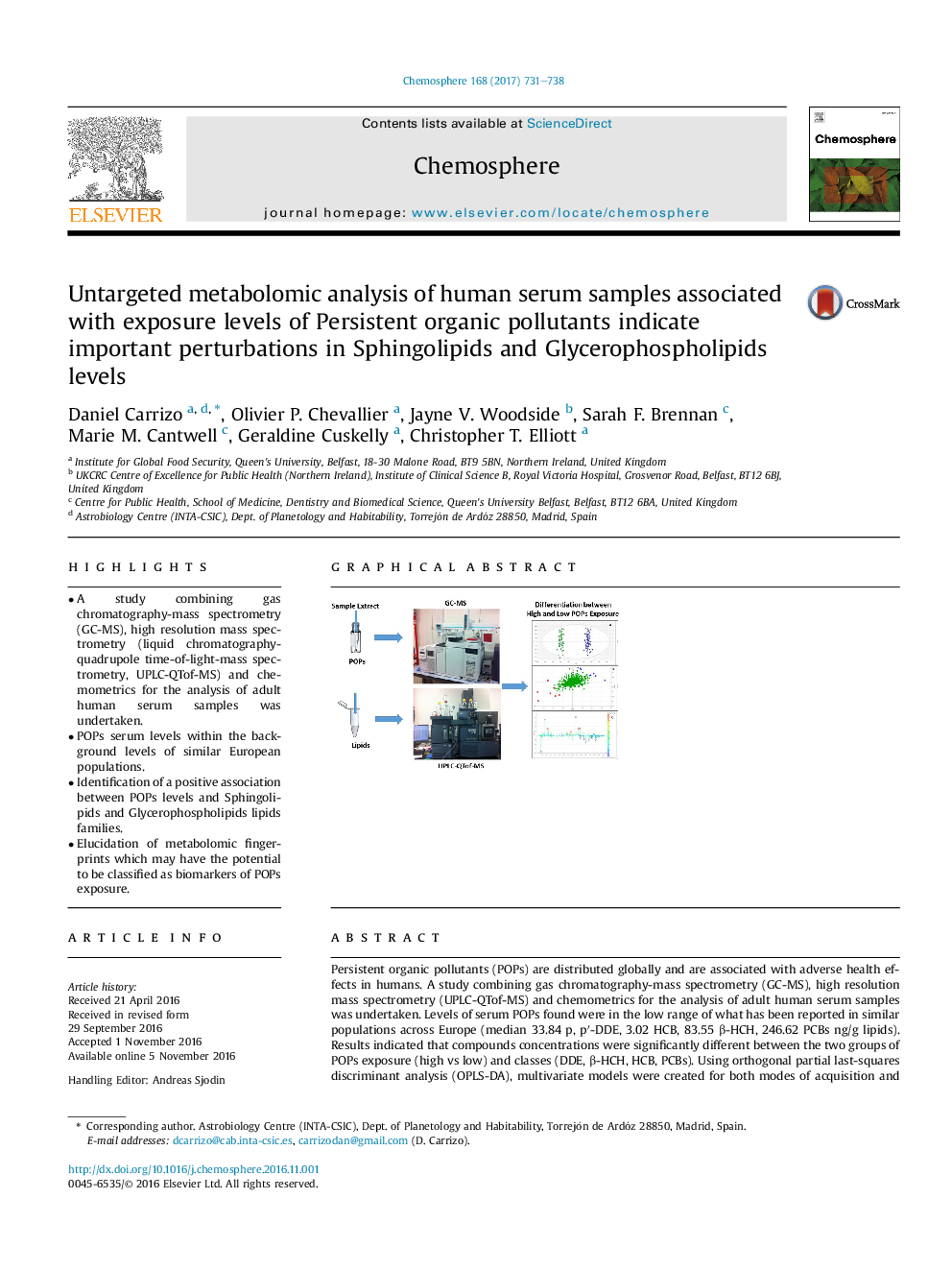| Article ID | Journal | Published Year | Pages | File Type |
|---|---|---|---|---|
| 5746612 | Chemosphere | 2017 | 8 Pages |
â¢A study combining gas chromatography-mass spectrometry (GC-MS), high resolution mass spectrometry (liquid chromatography-quadrupole time-of-light-mass spectrometry, UPLC-QTof-MS) and chemometrics for the analysis of adult human serum samples was undertaken.â¢POPs serum levels within the background levels of similar European populations.â¢Identification of a positive association between POPs levels and Sphingolipids and Glycerophospholipids lipids families.â¢Elucidation of metabolomic fingerprints which may have the potential to be classified as biomarkers of POPs exposure.
Persistent organic pollutants (POPs) are distributed globally and are associated with adverse health effects in humans. A study combining gas chromatography-mass spectrometry (GC-MS), high resolution mass spectrometry (UPLC-QTof-MS) and chemometrics for the analysis of adult human serum samples was undertaken. Levels of serum POPs found were in the low range of what has been reported in similar populations across Europe (median 33.84 p, pâ²-DDE, 3.02 HCB, 83.55 β-HCH, 246.62 PCBs ng/g lipids). Results indicated that compounds concentrations were significantly different between the two groups of POPs exposure (high vs low) and classes (DDE, β-HCH, HCB, PCBs). Using orthogonal partial last-squares discriminant analysis (OPLS-DA), multivariate models were created for both modes of acquisition and POPs classes, explaining the maximum amount of variation between sample groups (positive mode R2 = 98-90%; Q2 = 94-75%; root mean squared error of validation (RMSEV) = 12-20%: negative mode R2 = 98-91%; Q2 = 94-81%; root mean squared error of validation (RMSEV) = 10â19%. In the serum samples analyzed, a total 3076 and 3121 ions of interest were detected in positive and negative mode respectively. Of these, 40 were found to be significantly different (p < 0.05) between exposure levels. Sphingolipids and Glycerophospholipids lipids families were identified and found significantly (p < 0.05) different between high and low POPs exposure levels. This study has shown that the elucidation of metabolomic fingerprints may have the potential to be classified as biomarkers of POPs exposure.
Graphical abstractDownload high-res image (228KB)Download full-size image
